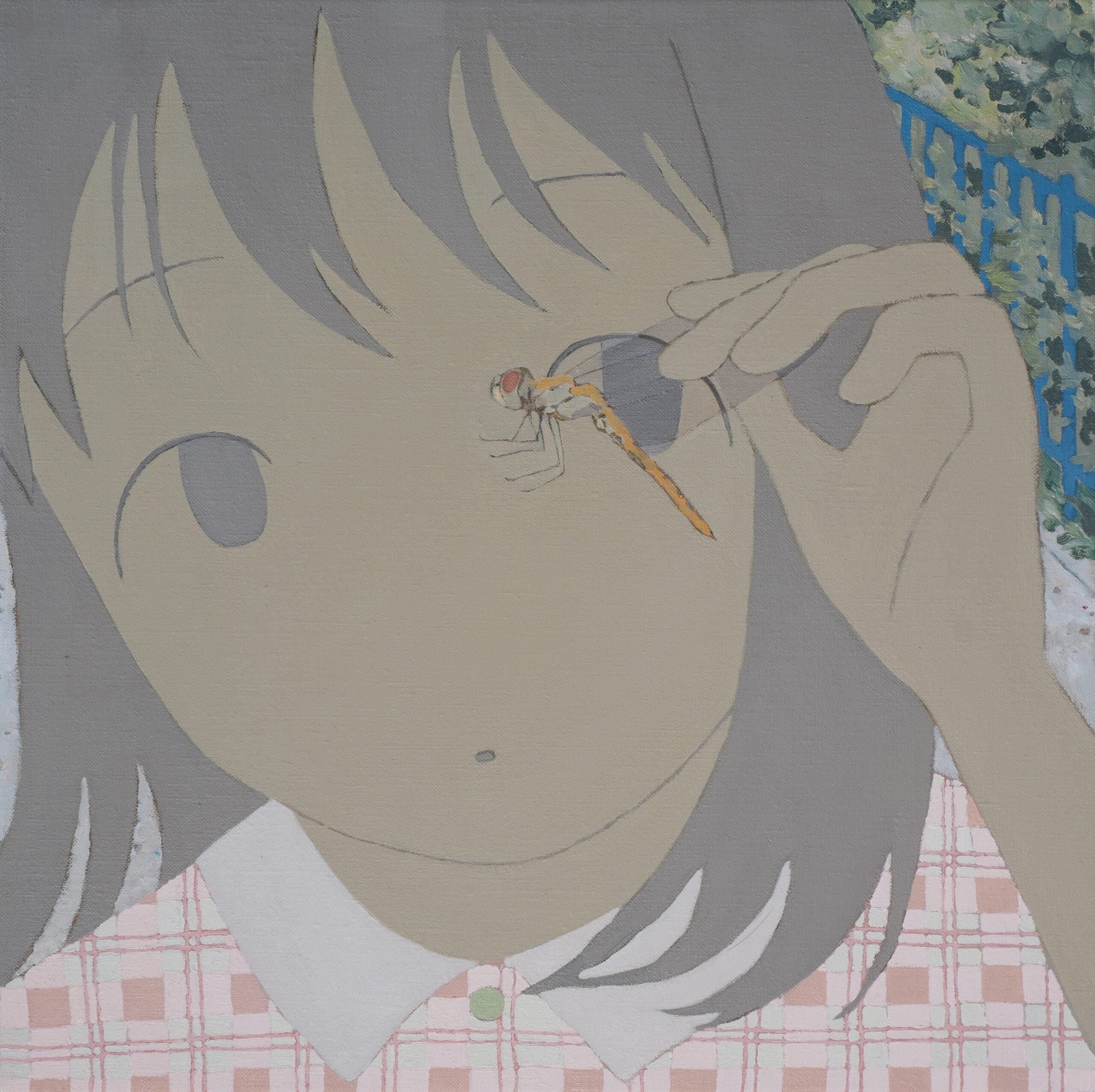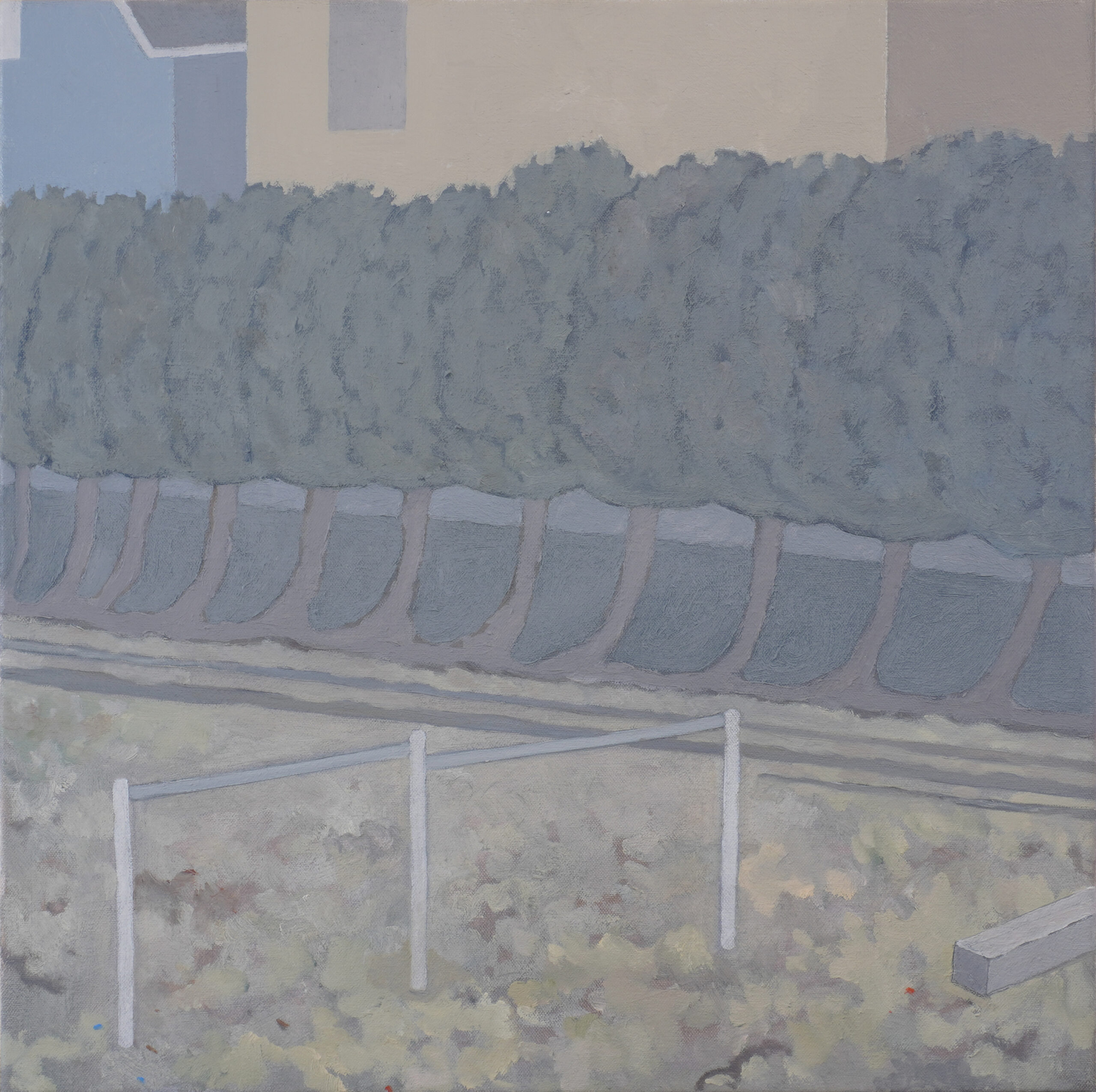<1F>
Uchercie *window (1F) / 3F
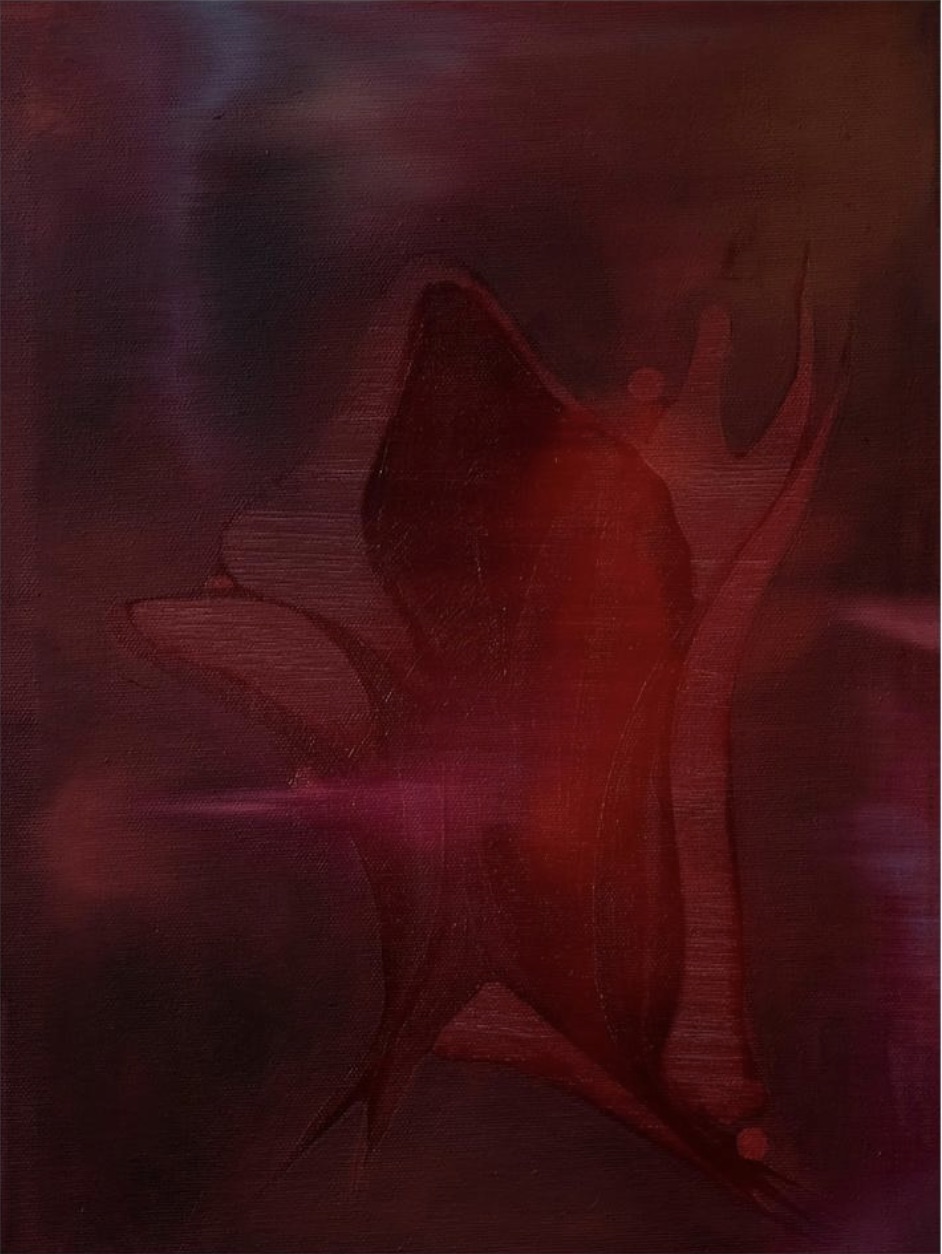
Uchercie holds a MFA degree in Fine Art from the Goldsmiths, University of London. Uchercie has published a solo photography book Unconsciously, and their artworks have been exhibited in Arles photo festival, Art Basel, Somerset house, Saatchi gallery and other galleries worldwide.
Uchercie’s practice investigates the intersection of cognitive architecture, collective agency, cybernetic feedback, and spirituality. Through an exploration of absurd narratives, the practice engages in counteraction and emancipation by drawing on accelerationist myths. It navigates from the perspective of the phenomenology of perception, queering visions of the future within the context of post-capitalist desires and the challenges of post-human progress.
Sawako Nasu *Window (1F) / 2F
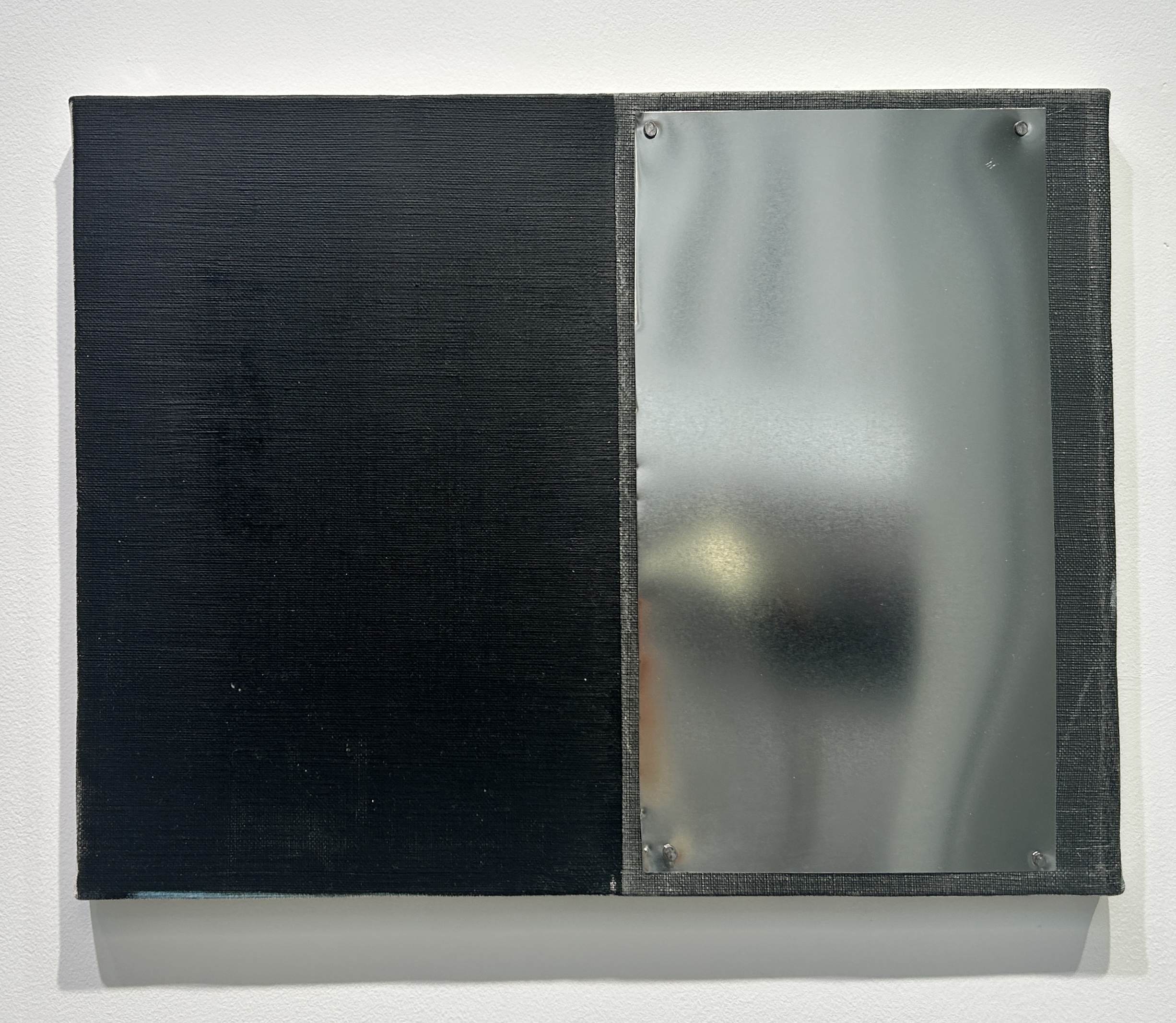
1996 Born in Tokyo, Japan
2021 BFA in Oil Painting, Tokyo University of the Arts
2023 MFA in Oil Painting, Tokyo University of the Arts
Sawako Nasu uses the language of painting to talk about distance, connection, and relationships. When reflecting on her own work, Nasu says, “How can I come in touch with paintings of the past?” Underlying Nasu’s work is a sense of the absolute, unbridgeable distance that lies between the classical and modernist paintings she admires, as well as that which lies between their times and herself today. It is this sense of distance that gives her art its thorough vision.
Nasu’s approach to the possibilities of painting, anchored in contrasting the era of classical painting with the era to which she belongs to as a contemporary artist, goes beyond the scope of her personal interests and reflects a current awareness of what is possible at the edge of art history, a site of constant renewal.
Kenji Sakai *1F / 3F
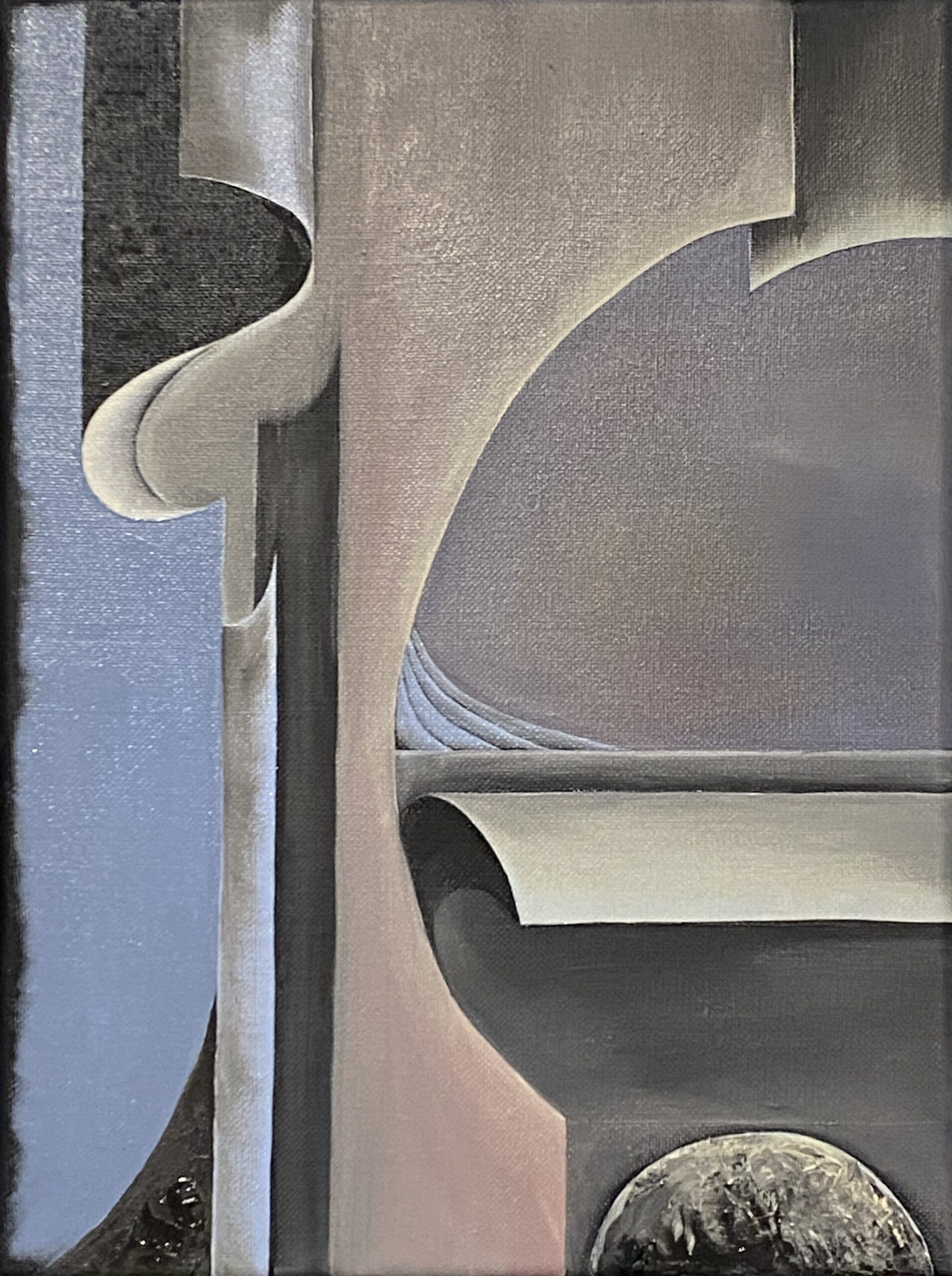
1996 Born in Kyoto
2019 BFA, Kyoto Seika University, Printmaking Course
2022 MFA, Musashino Art University in Printmaking course
Now based in London
Kenji Sakai works across various media, including oil painting, printmaking/silkscreen, and sculpture. Drawing inspiration from personal experiences, his work examines the relationship between the individual and the collective in modern society, as well as the inorganic structures of urban environments. Through a perspective that surveys concepts such as time, space, and invisible dimensions, his art challenges the viewer’s perceptions.
In recent years, Sakai has been creating works that suggest the distortions and systemic breakdowns hidden behind the beauty of modern, developed societies. Depicting fragments and structures of futuristic cities meticulously controlled by artificial systems, as well as works reminiscent of a world’s end, his art employs minimal elements such as points, lines, and planes. By incorporating geometric shapes that have endured through the ages, he conveys a vision of “world balance” while simultaneously hinting at its precariousness.
Guy Haddon-Grant
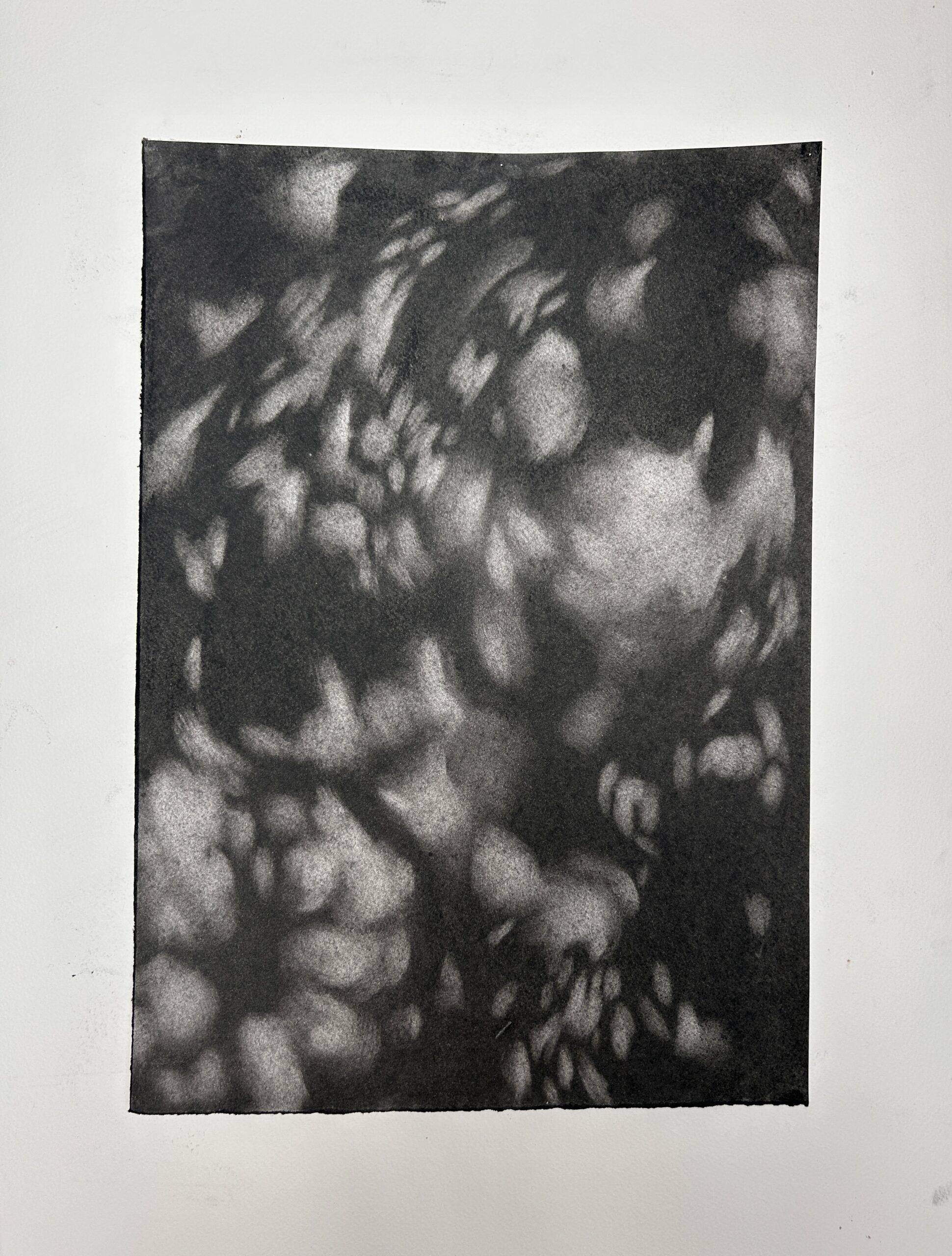
Guy Haddon Grant’s monochromatic sculptures and drawings lie at the boundary between abstraction and figuration. Haddon Grant deftly plays with textures to emphasize this dual nature. The abstract elements are richly textures, rough, grainy, and organic forms that bear the imprints of the artist’s hand and brushstrokes. In contrast, the representational aspects, evoking body parts such as hands, faces, paws, eyes, hors, are meticulously polished, boasting soft, rounded surfaces. As the beholder’s gaze navigates the rhythmic interplay of textures, the artist’s guidance becomes palpable, leading the observer through glimpses of realism amidst the turmoil and chaos of plaster.
Haddon-Grant (1986) was born in London, started his studies in Camberwell College of Art before moving to Florence, Italy for two years to study the renaissance masters and their techniques. He works in charcoal, candle soot, wax, plaster, steel and wood; creating enigmatic works with a narrative that informs one another. Haddon Grant upcoming exhibitions include: London – Tokyo Now, February 2025, Biscuit Gallery, Tokyo. His past solo exhibitions include: Chimaera, April 2024, NISO, London; Dust to Dust, June 2023, NISO, London; Mind’s Eye, 2021, Pi Artworks; Surrender, 2019, Roman Road Gallery, London; Ashes, 2018, Dellasposa Gallery, London. His past group exhibitions include: Material Syntax, Kersey & Gold, 2024; Buried, 2024, OHSH Projects, London; Inaugural Group Show, 2024, NISO, London; Artist’s Artists, 2023, OHSH Projects, London; Post Post War, 2023 OHSH Projects. He was included in the Bloomberg New Contemporaries at the ICA in 2010 and the Liverpool Biennial, and was elected a member of the Royal British Society of Sculptors.
Nicky Hodge
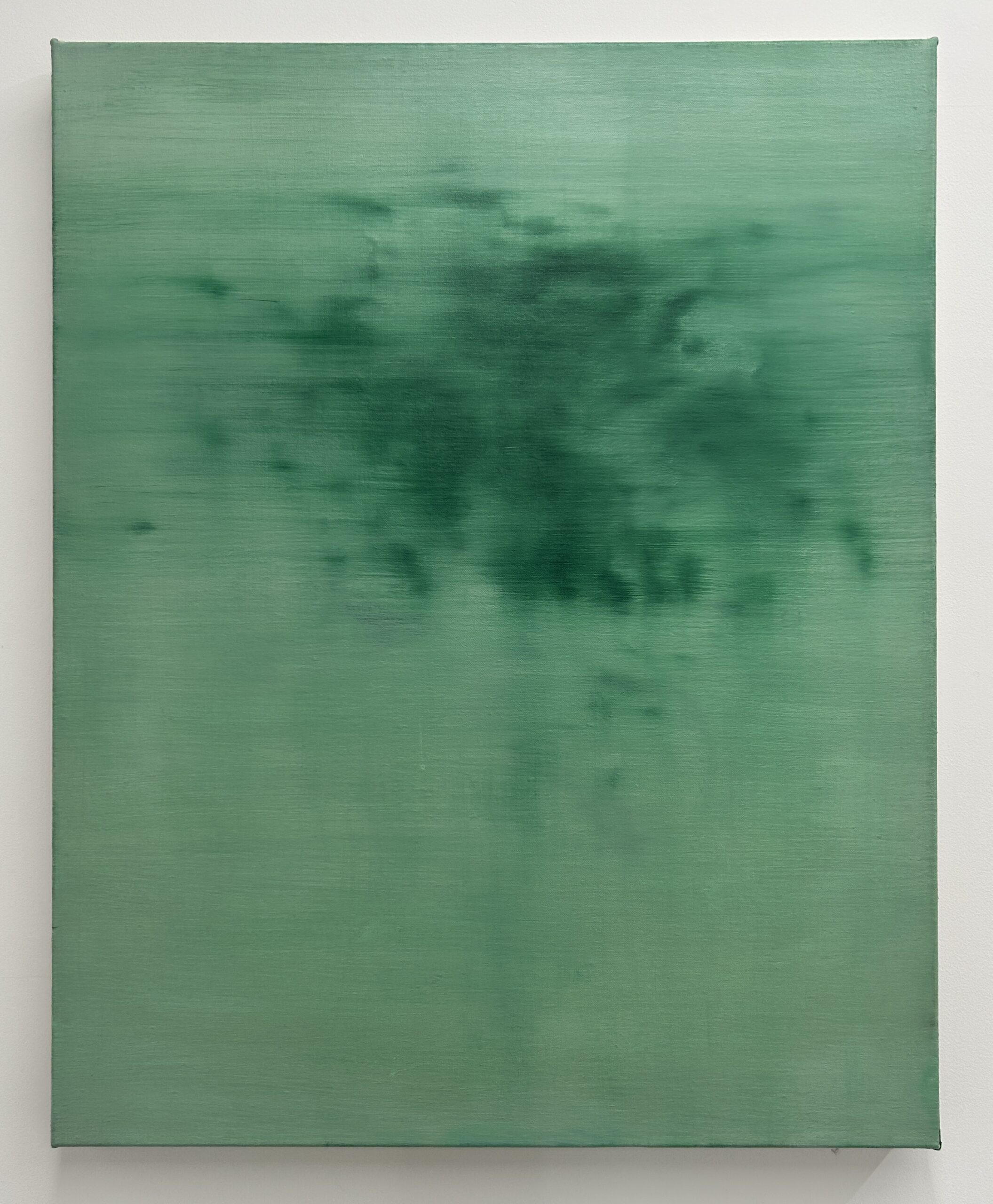
Nicky Hodge creates her abstract paintings quickly and performatively, making sweeping, gestural marks spontaneously and unconsciously. She paints with wet acrylic mixed with water on untreated raw canvas, sometimes going over the surface with a soft brush to blur the calligraphic marks into ethereal forms. The ensuing works are entirely abstract and expressive. “I never know what I’m going to do on a given day in terms of imagery, so the process is quite subconscious,” she says. “There is a flow between the works, and each canvas serves to inform the next as I work.”
Hodge lives in London and works from her garden studio in Nunhead. She studied fine art and critical studies at Central St Martin’s before embarking on her solo practice. She gained a postgraduate diploma in fine art at Goldsmiths College in 2015, which she pursued alongside working at the Government Art Collection as a curator. Since 2018, she has pursued her practice full-time. Her work has been exhibited in group and solo shows across Europe for the last 30 years, including a solo show titled Horse Gossip at Bobinska Brownlee in 2021 and a two-person show with German abstract artist Michael Kaul at Hart’s Lane Gallery in London in 2022.
Hodge works in a state of pure concentration, allowing spontaneity and chance to create surprising compositions. She is particularly moved by the work of Belgian artists, including Raoul De Keyser and Ilse D’Hollander. “I feel my paintings are vessels for conveying emotion,” she says. “Not necessarily for my emotions, but those of the viewer – some strong feeling that is not for me to decide.”
Hidetaka Suzuki
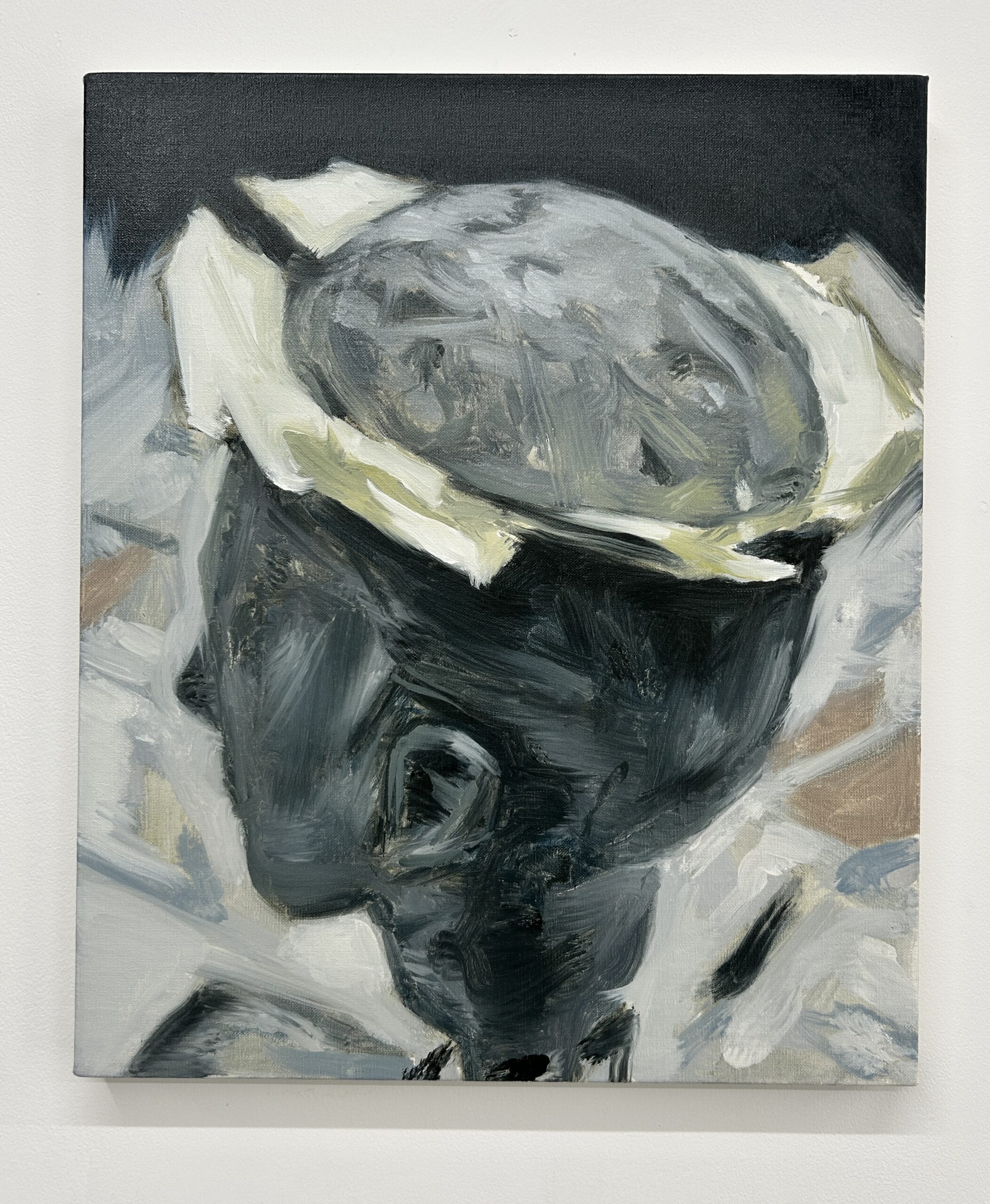 1986 Born in Hokkaido
1986 Born in Hokkaido
2012 BFA in Oil Painting, Musashino Art University
2014 MFA in Oil Painting, Musashino Art University
He continues to create paintings based on the theme of fiction and reality. The reality we usually experience, and the fiction we imagine and create. He blurs the boundaries that seem to separate the two worlds, and asking the viewer what it is that we truly see.
<2F>
Arashi Tanaka

2000 Born in Fukuoka
2022 BFA, Tama Art University
2024 MFA, the Fine Art program at the University of the Arts London
Our vitality, existing faintly like fleeting snow. The ceaselessly beating pulse. Places of memory. Using the natural phenomenon of crystallization, where time transforms and solidifies, I encapsulate information—those I wish never to lose—like ice, freezing time itself. Through recorded heartbeats, the sound waves of rain and wind, the crystals change shape, their brilliance making the invisible visible.
C. Lucy R. Whitehead

Lucy R. Whitehead (b. 1991, Liverpool, UK) is a London-based artist. She holds a BA in Drawing from Camberwell College of Art and an MA in Painting from the Royal College of Art and a BA, where she was awarded the Basil H. Alkazzi Scholarship. Whitehead’s work has been exhibited internationally, venues including Mint Gallery in Munich, Tabula Rasa in Beijing, and Berntson Bhattacharjee in London, with a recent solo exhibition at Soho Revue in London. She has recently been awarded the DYCP grant from Arts Council England.
“My work explores themes of human embodiment; seeing the body as Itself and seeing the body as Other, through the physical act of painting. More specifically, I am interested in the times we encounter our body Itself as the Other. Moments where we become abruptly and inescapably aware of how our physical self is not something we possess or control but rather something we inhabit.
Bruising, bloating, blushing; sagging, swelling, stretching. The burning pinks and pulsing blues, sallow greens and fading greys.
In becoming aware of our physical misgivings and limitations, we establish our position in the world and what we can make of it. The canvas edge serves as a metaphor for these contingencies. Figures devoid of any discernible identity or gender, squeeze into the boundaries of the picture plain, ultimately dictated by and succumbing to their existence.
By allowing the work to evolve through the unpredictable nature or mark-making, these beings exist on a sliding scale of figuration and abstraction. What appears as a result is neither friend nor foe. Like catching a glimpse of yourself in the bath taps, they straddle the line between the familiar and the absurd; the joyous and the grotesque. Teetering on the edge of plausibility.”
Daniel Brusatin
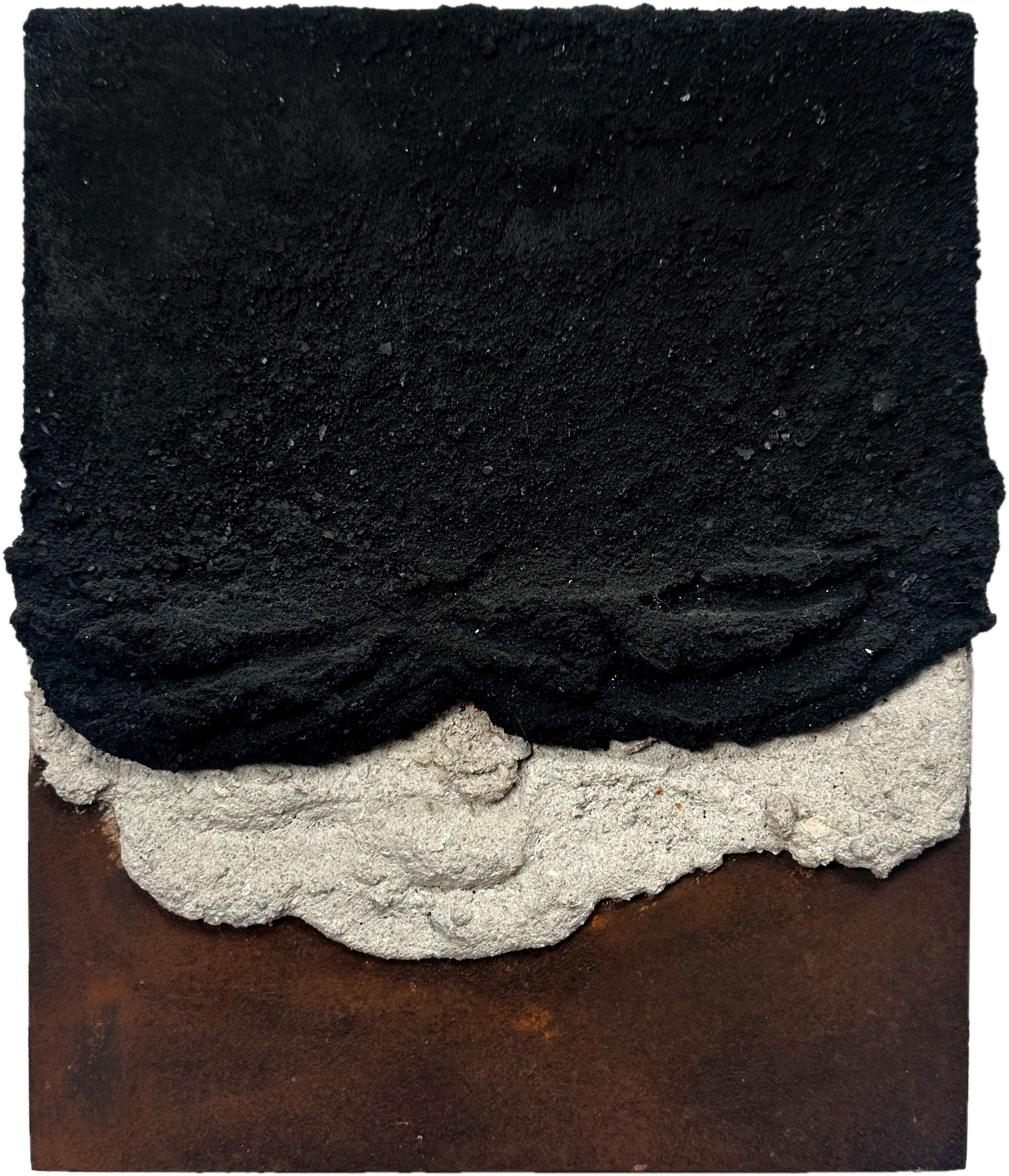 1988 born in Colombia
1988 born in Colombia
Born in Colombia to an Italian family of agronomists and architects, Daniel Brusatin grew up very close to nature and was exposed from a very young age to the arts and design. He trained in the Academy of Fine Art in Florence with an emphasis in sculpture; and his love for materials and production techniques took him to Milano to a second degree in Design and Applied Arts. During his studies and at his arrival in London in 2013, Brusatin worked for Brian Clarke where his love for stained glass, Ceramics and Architectural Art found mentorship.
Exploring visual language through semiotics, art history, traditional techniques and the act of making, Brusatin attempts to blur the arbitrary lines dividing the arts. “If art is to survive in the collective consciousness, we must integrate craft, industry and poetry. Art cannot exist on the periphery, it must be part of nature and human architecture”. Deeply passionate about the concept of gesamkunstwerk i.e. the total work of art, his practice intuitively explores the ecosystemic relationship stain glass, mosaics, sculpture and painting have on the experience of space.
Daniel Brusatin’s upcoming exhibitions include: Daniel Brusatin: The flower is always in the almond, January 2025, NISO, London; London – Tokyo Now, February 2025, Biscuit Gallery, Tokyo. His past exhibitions include: Material Syntax, November 2025, Kersey & Gold, London; Inaugural Group Exhibition, March 2025, NISO, London; Daniel Brusatin: Malaké, October 2022, NISO, Paris; Komorebi: Between Shadow and Light, October 2021, NISO, London.
Mateo Revillo
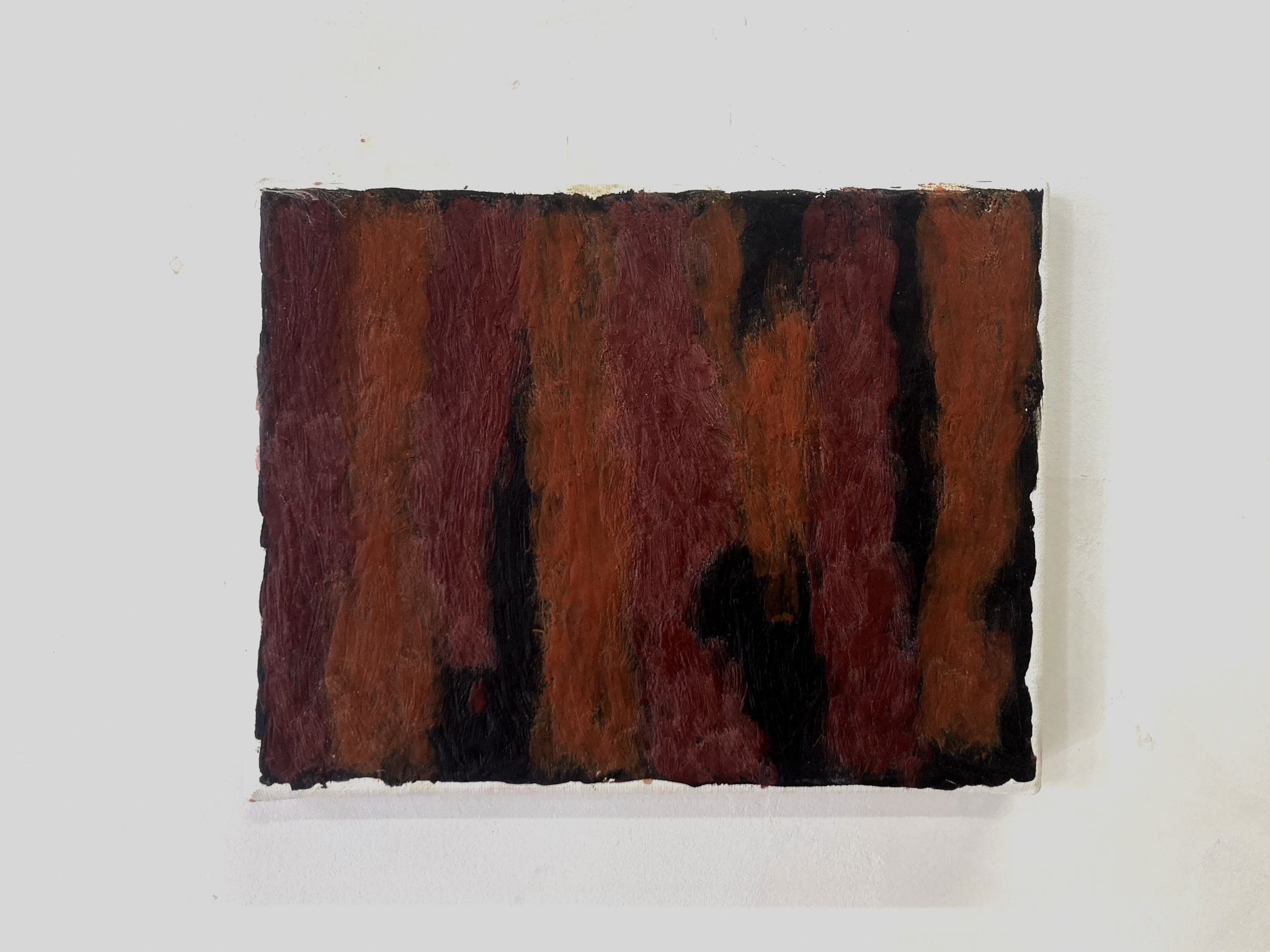
Mateo Revillo’s works draw upon contemporary abstraction as well as ancient times and Mediterranean civilisation, operating in and around the uncertain terrain of mystery. It traces a vast timeline that links primitive frescos with the breaking of the rectangular format as proposed by Minimalists, whilst keen to evoke a hectic, immediate and savage world. The energy fueled into the work builds the bodily, organic and archeological language of his paintings. Between painting and architecture, there’s a vow to the expansion of image beyond surface to a space of figuration. (Born in 1993, Spain; lives and works in Paris.
<3F>
Maoka Ueda
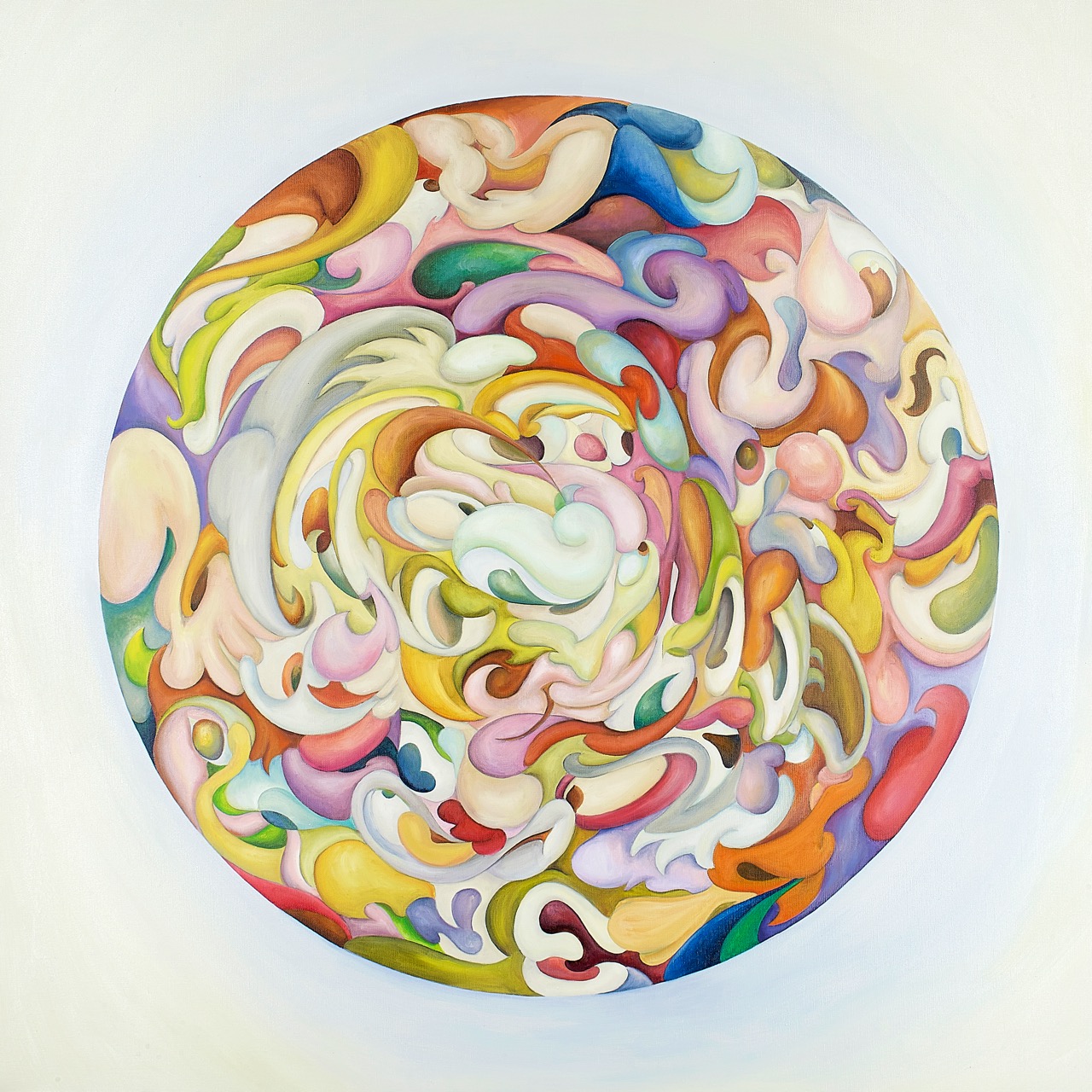
Maoka Ueda was born in 1996 in Hyogo. She studied Art & Design in London for five years in the Foundation course at Central Saint Martins and in the BA(Hons) Graphic Design Communication at Chelsea College of Arts, University of the Arts London, England.
Ueda’s artwork blends a deep respect for nature, life, and the universe with mathematical concepts like the golden ratio, vortex structures, and fractals. These natural principles are woven into the piece to bring out the mystery and vitality of the cosmos, creating a visual experience that resonates both intellectually and emotionally. The artist takes inspiration from the organic shapes and spirals found in nature, abstracting them and using them in the design of characters and creatures. This is based on the idea of “self-similarity,” which is central to fractals, where small parts of a system resemble the whole.
In her work, parts of one character are shared with others, symbolizing interconnectedness. As viewers mentally link these shared elements, new life forms emerge, ultimately forming a larger spiral structure that reflects the interconnectedness of everything. This mirrors the fractal nature of life, where patterns repeat at all scales, from tiny structures to the vastness of galaxies. Additionally, the artwork captures the beauty of chaotic and seemingly irregular forms found in nature, such as the swirling motion of a whirlpool or the branching of trees. While these forms may appear irregular, they follow underlying mathematical rules that create harmony and order. By incorporating these chaotic yet ordered shapes, the piece taps into the viewer’s subconscious, evoking symbols of life force, energy, and eros. The flowing curves and interconnected patterns suggest the fundamental processes of growth and connection, reflecting the same mathematical principles that govern both organic life and the universe.
Ultimately, this work not only celebrates the natural world but also invites viewers to engage with the deeper mathematical laws that shape it. By blending the visual beauty of fractals, spirals, and the golden ratio with symbols of life and energy, it encourages a holistic view of the universe, where everything is interconnected and governed by the same principles of beauty and order.
Lea Embeli
 1994 Born in Pančevo, Serbia.
1994 Born in Pančevo, Serbia.
2018 MFA, Department of Applied Painting, Faculty of Applied Arts, University of Belgrade
2021 Graduate School of Oil Painting, Tokyo University of the Arts
2023 Enrolled in a second Master’s program
My work is an exploration of the intricate relationship between the female body, artificial intelligence, and historical representation in art. Through the use of AI image-generating technology, I investigate how traditional depictions of women in classical paintings can be transformed and distorted beyond recognition, intentionally pushing the boundaries of recognition.
The resulting images are deliberately unsophisticated and unsettling, challenging conventional notions of beauty and identity. This method allows me to confront the contingent symbolism and inherent biases embedded in historical artistic representations of women, as well as in AI technology itself. Each distorted figure becomes a cipher, inviting viewers to question the norms and expectations associated with the female form from art history to the present day.
Jean-Philippe Dordolo

Born 1981 in Orange, France. Lives and work in London, UK.
Dordolo’s paintings centre on the grotesque. His depiction of figures and objects using distortion and exaggeration evokes a sense of estrangement which transforms the domestic into a stage for psychological unease. By toying with spatial manipulation and ambiguous narratives, the work probes themes of alienation, transformation, and the fragility of perception. This is echoed in Dordolo’s use of paint and material process, often resorting to thick impasto to render figurative details. While his compositions operate on an intimate and human scale, they often suggest movement beyond the frame. This interplay mirrors Dordolo’s interest in dualities—intimacy and estrangement; beauty and unease; the known and the unknowable.
Jean-Philippe Dordolo graduated from the Slade School of Art in 2019 with a MFA in Fine Art. Solo exhibitions include 3.01AM at Castor (London, 2023), FEVER at Brooke Benington (2021) and Fliegen ohne Flügel at Saatchi Gallery (2019). He is the recipient of the Jealous Prize (2020), the Pankerd Jones Memorial Prize (2018) and the Euan Uglow Scholarship (2017).
Information
biscuit gallery×NISO collaborative exhibition
“bridge”
Venue:biscuit gallery 1〜3F
Dates:January 30 (Thu)〜February1 6 (Sun), 2025
Time:13:00〜19:00 ※Closed on Mon, Tue, Wed
Admission:Free
Organized by biscuit gallery
Cooperation:NISO
Participating:
<biscuit gallery>
Maoka Ueda, Lea Embeli, Kenji Sakai, Hidetaka Suzuki, Arashi Tanaka, Sawako Nasu
<NISO>
Daniel Brusatin, Jean-Philippe Dordolo, Guy Haddon-Grant, Nicky Hodge, Mateo Revillo, Uchercie, C. Lucy R. Whitehead

